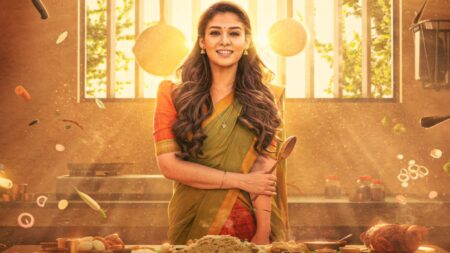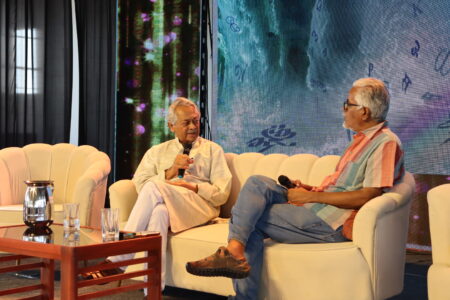The Modi government move to merge the Children’s Film Society of India, Directorate of Film Festivals, Films Division and National Film Archive of India into a corporate entity does not augur well for the nourishment of a democratic cinematic culture in India.
There is widespread protest among filmmakers, critics, historians, archivists and cineastes against the Centre’s move to ‘restructure’ four public institutions established to promote and preserve film heritage and culture in India. The targeted institutions are the Children’s Film Society of India (CFSI), Directorate of Film Festivals (DFF), Films Division and National Film Archive of India, by merging them with the National Film Development Corporation.
Simply put, what is proposed is the closure of the four publicly funded, owned and managed institutions mandated to preserve, encourage and nurture Indian film heritage and culture and bring them under NFDC, which as of now is a corporation. The Centre claims the new move will help converge the activities of these institutions and pool resources for better coordination so as to ensure synergy and efficiency in achieving the declared mandate of the bodies.
Some time ago, a high power committee under Bimal Julka was appointed to look into these institutions and the panel submitted its report in 2020. According to the I&B Ministry, the committees were appointed “for rationalisation and professionalisation of institutes related to film activities”. After eight meetings, the committee had recommended specific roadmaps for the development of National Film Development Corporation, Films division, Children’s Film Society of India, Satyajit Ray Film and Television Institute, Directorate of Film Festivals, and National Film Archives of India, etc.
The ministry says the committee has found “overlapping activities undertaken by multiple institutes and has suggested an umbrella configuration with four broad verticals under which institutes should work viz. Production, Festival, Heritage and Knowledge.” These verticals, according to the ministry, would be “headed by professionals”. The report recommends the creation of a “Film Promotion Fund to fund independent filmmakers for making commercial films”.
Lacking transparency
Ironically, apart from bureaucrats, none of the primary stakeholders — such as the filmmakers, historians, scholars and film-related institutions — was consulted by the Committee in the process. Nor has the report been published or made available in the public domain even after RTI applications were filed.
Despite the vociferous protests across the country, the government has not allayed the apprehensions of the film community nor has it responded to the charges of utter lack of clarity and transparency behind the intentions and probable consequences of the proposed move. Even though the Report is not made available or the matter discussed in the Parliament, the first definitive moves towards merger are on the way.
The official website of the Films Division informs that the “CEO of Central Board of Film Certification(CBFC) Ravinder Bhakar has been made in charge of National Film Development Corporation (NFDC), Films Division and Children Films Society of India (CFSI). Mr Bhakar assumed charge of these Departments on Monday (13.12.2021), consequent to the Ministry of Information and Broadcasting order last Friday (10.12.21) appointing him as Managing Director (MD) of NFDC, Director General (DG) of Films Division and CEO of CFSI. Mr Bhakar,1999 batch officer of Indian Railway Stores Service (IRSS), has been given these charges in addition to his present duties as CEO of the Films certification body, until further orders. With this, all these film-related departments of the Ministry of Information and Broadcasting, headquartered in Mumbai, have come under a single command. The move is expected to smoothen out the undergoing process of merger of Films Division and CFSI within NFDC, which is undergoing major reforms in its structure and functioning.”
Why the merger?
Obviously, the mandate and functions of the four, to-be-merged organisations have totally different goals, institutional rationale, follow different and operational modes and more importantly, have a long process of evolution and complex histories of their own. Moreover, the technical expertise, managerial challenges and institutional dynamics of all these organisations demand different skill-sets and attitudes.
So, the purported goals of ‘synergy’, ‘efficiency’ and ‘economy’ seem to be an eyewash for two reasons: one, synergy does not mean merger or creating monoliths out of diversity. These organisations function in specialised areas and merging them could rob of each of autonomy and actually departmentalise their activities, and two, all the above concerns and remedies that the merger proposes – obviously coined in the corporate terminology – can be achieved more effectively and efficiently through better coordination with regard to funding, resource-sharing and by dovetailing their short-term and long-term objectives.
But in the times we live in, privatization and centralization are offered as the answer and solution to all the ills – political, economic or cultural. Moreover, this argument goes well with the current predicament of all the public sector institutions in the country. If we were talking about synergy, efficiency and viability in the arena of goods and services earlier, now we are extending the argument to arts and culture.
From putting out manufacturing and production units for sale, we have moved on to essential services like communication, health and education, and finally to culture and heritage, memory and imagination.
Diverse objectives, functions and domains of activities
The DFF formed in 1973 organises international film festivals and national awards. The FD formed in 1948 is an agency in charge of the production of films of public interest and documentaries on current issues; this institution is also the custodian and chronicler of Indian history in images. The mandate of CFSI (1955) is the production, promotion and distribution of films for children, and NFAI (1964), on the other hand, is responsible for the preservation, restoration, archiving and digitization of films.
Is the merger of these diverse institutions a viable and workable proposition at all?
Though all these activities are related to ‘film’, taken as fields of expertise, and domains of knowledge, they involve totally diverse professional skills, technical knowledge and administrative setup. They are distinct and separate domains of activity, realms of expertise, and fields of knowledge. The rationale for their formation and the modes of their evolution too have followed different trajectories. Merging them all into one monolithic organisation is not only unwise but could also be fatal as far as the pursuit and fulfilment of the basic objectives of these organisations.
What these institutions actually need is more funds for infrastructural and technological upgrade, more human resources and managerial autonomy to liberate them from bureaucratic modes of functioning, and to re-engineer them to address emerging digital opportunities and challenges.
Instead, what we see here is the denial of the rich diversity of the domain knowledge and expertise these institutions have gathered through decades, and turning them into ‘verticals of revenue’ through centralization. Such centralization, as we have seen in many cases, is the first step towards their privatization, which means offering on a platter to corporate capital, our visual heritage and its invaluable tangible and intangible assets.
As author Manu Chakravarthy said in a web discussion on the issue, “what we need in every realm of life and polity today is not verticality and centralisation, but horizontality and decentralisation”. One could see the beginnings of this in the abolition of the Film Certification Appellate Tribunal last year which too was a step in the direction of centralisation of control and limiting the spaces and platforms of the regional.
If one takes film archiving and preservation alone into account, even with public funding and institutional mechanisms, and the lifelong commitment of visionaries such as PK Nair, we have been able to preserve less than 10 per cent of the films from the silent era. India, which is one of the countries in the world that produces the largest number of films, also has the lowest survival rate in the world.
Countries with industries of similar magnitude like China (31%) and Argentina (30%) have much higher survival rates compared to India. Moreover, the very diversity & geographical spread of the Indian film industry and culture makes centralisation an absurd proposition. Historically, it has had different centres of production, diverse distribution patterns and exhibition channels. One has to address Indian film heritage in all its complexity and specificity. And all over the world, the film has been recognised as part of cultural heritage and public funds and institutions have been mobilised to preserve, restore and digitize them.
What is/was wrong with different and autonomous institutions?
Apart from the political mission of dismantling all the glorious institutions of Nehruvian legacy, what exactly prevents synergy-building among the existing institutions now? If it is about the ease of decision making, experience all over the world shows that, as far as cultural institutions are concerned, what is needed is diversity and centralization always impedes innovation, faster and effective decision making and implementation.
And the record of Indian bureaucracy is not different. On the other hand, decentralised organisations, where the connection with the grassroots level is closer and intimate, have proved to be more vibrant and efficient. They also turn out to be more accountable and transparent with checks and balances on both levels – horizontal (due to accountability arising out of public participation and involvement) and vertical (in terms of administration and fund use).
Centralised administration and top-down control are more often blind to the sensibilities and needs of the margins/regions and are prone to thrust ready-made decisions from above, often leading to inefficiencies and promoting rent-seeking for favourable and faster decisions. A decentralised setup is all the more crucial in the area of culture, as diversity and pluralism are the norms, rather than uniformity.
Public ownership and access
There is the more fundamental question as to who owns or should own culture and heritage? Should it be left to the mercy of centralised bureaucratic setup or private capital, or left under the care of public ownership? Films being public heritage, institutions that acquire and promote it should also be publicly owned, run and monitored, and also publicly accessible and accountable.
The culture of monetising
Will centralization and merger help monetization of film and film heritage? The whole idea of monetising film heritage is very strange. The basic logic of monetisation is putting your money where there are maximum returns on investment, and heritage cannot be classified in terms of viability and profit.
Moreover, the primary mandate of these public institutions being the preservation of Indian film heritage, it involves a lot of investment in non-monetary and long-term activities like research, travel, procurement, preservation, restoration, and keeping pace with technological developments on all these fronts.
This stupendous but extremely important cultural/historical task cannot be left to the tastes and priorities of private funding and managerial practices that are based on profit-motive and immediate financial viability. It calls for unconditional state support, long term commitment and autonomy. Without these, the heritage economy will boil down to myopic, short term revenue models churning out saleable merchandise and cute memorabilia.
Even now monetising can be effectively pursued if we digitise, restore and curate the rich depository of film material that is already available with these institutions and by using the various broadcasting and web platforms of the State like Doordarshan for this. The government can also think of OTT channels in the public sector. We have enough interesting and exciting content and all we need is intelligent and creative curating and showcasing of Indian cinema to capture the regional, national and global markets.
What is needed is more decentralisation and regionalization: More funds and updating technological and human resources.
In the Indian context, to preserve its diverse and plural heritage, what is required is more regional and language-wise archives and documentation centres. Only such diversified and localized organisational setup will be capable to identify, trace, preserve, restore and digitizing whatever is left and can be retrieved of Indian film heritage. Any archival work demands networking with and knowledge about local production patterns, institutional networks and film culture and only decentralised institutional arrangements can address such diversity.
Given the immensity of the task at hand, of preserving, archiving, restoring and digitizing Indian film heritage, it is obvious that there is a need for huge capital and technological resources. Investment in R&D is also crucial. Under such circumstances, with no immediate profit-making opportunities at hand, no private corporation will be ready to invest upfront in the area of film archiving.
If at all they do, it will only be geared towards the most sellable from whatever is available. If this heritage is sold to private corporations, there is no doubt that only the most popular and sellable among them will survive, or even be preserved for posterity.
Whatever is different, experimental or anti-establishment will be relegated to oblivion forever. So public ownership and control over film heritage are also crucial to fight the rising tide of selective memory and fabricated history. Unless film or any historical archive is publicly owned and open to public access, it will damage and pervert our historical vision in the long run.
Films constitute a rich and complex source of our cultural heritage: every bit of film and film-related material to be preserved as they are visual records of the world and times. The Indian film industry is also unique as it is one of the industries in the world that has survived the global competition and has consistently produced films during the entire course of the last century. Such a rich and varied source of our cultural history legacy cannot be left to whims and fancies, commercial interests and profit mongering of corporates.
It belongs to the public and all these institutions were built with taxpayers money, and they rightfully belong to us all. What is needed is not centralization but further strengthening of these organisations by putting funds and faith in them, and also demanding results and accountability.
India Art Review does not necessarily endorse all the views expressed by our contributors. We welcome a democratic debate on the issues discussed on our platform. If you want to be part of the discourse, write to us at [email protected]




